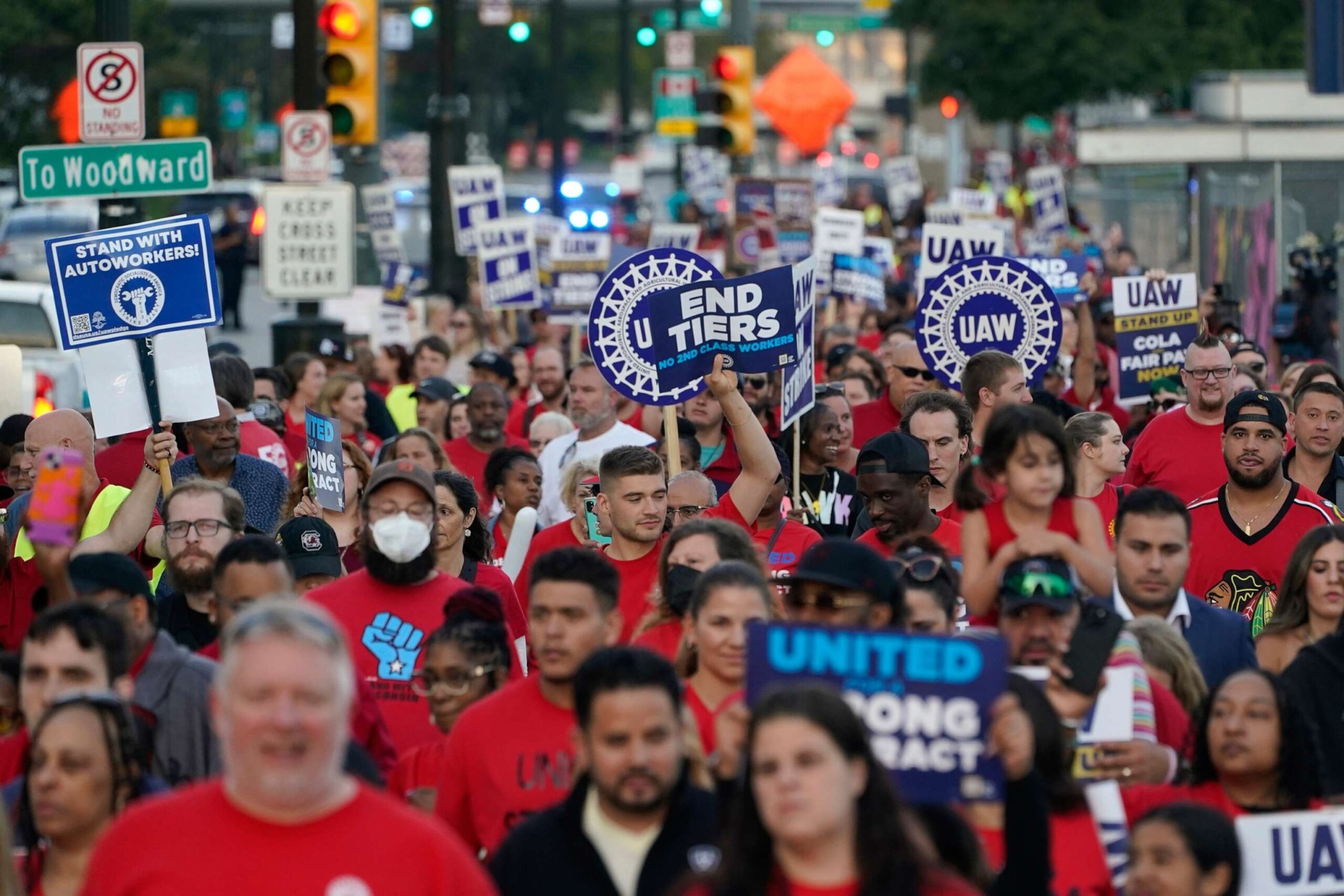The United Auto Workers strike continues and appears to be gaining strength. Nearly 5,600 more workers have walked out in the past week, adding to the initial 13,000 already on the picket lines.
The historic strike expanded with 38 more distribution centers at General Motors and Stellantis last Friday after the deadline for “serious progress” was missed by the company’s negotiators.
Ford was not included in the expansion, with the New York Times citing progress in talks.
The UAW strike began on Sept. 15 after the prior four-year labor deal contracts expired. The strikes were simultaneous at each of the Detroit Three plants, which is the first time UAW has done this on all three simultaneously.
“The strike is not a full-scale walkout by the union’s roughly 150,000 members but a “limited and targeted” work stoppage,” The New York Times reported.
According to AP News, about 13 percent of the union’s 146,000 members are now striking.
The goal of this stoppage for the union is to get better pay and increases that reflect their executives.
“The U.A.W. has demanded a 40 percent wage increase over four years — an amount that union officials have said matches the raises the top executives at the three companies have received over the last four years. Those raises are also meant to compensate for more modest increases the autoworkers received in recent years,” The New York Times reported.
In addition, the union also wants cost of living adjustments, pension reinstatement, more retiree benefits, shorter work hours, and a tiered wage system.
“Perhaps most important to the union is that it be allowed to represent workers at 10 electric vehicle battery factories, most of which are being built by joint ventures between automakers and South Korean battery makers,” AP News stated.
So far, the companies have not met the union’s demands and have only offered a 14.5 to 20 percent pay raise over four years.
“The Detroit Three say they can’t afford to meet the union’s demands because they need to invest profits in a costly transition from gas-powered cars to electric vehicles,” AP News said. “In the last week, tensions rose as the companies laid off thousands of workers, saying some factories are running short on parts because of the strike.”
Ford is the only one of the three reported to make “real progress” in negotiations. According to the New York Times, they conceded on cost-of-living adjustments, the right to strike and benefits for workers who were let go.
With no clear signs of ending soon, the strike could eventually impact the consumer.
“The strike could also cause significant disruptions to auto production in the United States down the line,” AP News said. “Today, the strike’s impact is not yet being felt on car lots around the country — it will probably take a few weeks before we see any significant shortage of new vehicles, according to analysts.”
A prolonged strike could have negative ramifications on economies surrounding the Midwest and auto plant areas. Strikers are receiving $500 a week, which is far less than they normally would. This means the millions they could make would be removed from the economy for however long the strike goes.
According to multiple reports, President Biden is in Michigan to show his support.
He posted on X saying his intention was “to join the picket line and stand in solidarity with the men and women of UAW as they fight for a fair share of the value they helped create.”
Negotiations look like they will continue until the union and Big Three can come to a consensus.


